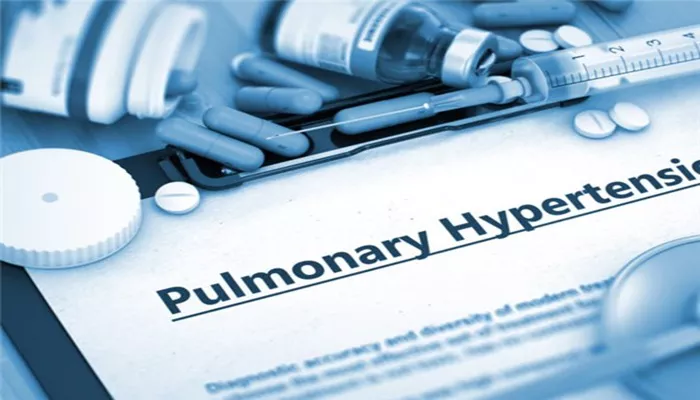Pulmonary hypertension (PH) is a progressive and potentially life-threatening condition marked by elevated blood pressure in the arteries of the lungs. One of its most defining and early symptoms is shortness of breath, or dyspnea. For patients, understanding this connection is vital for early detection, timely treatment, and improved quality of life. This article explores in depth how pulmonary hypertension causes shortness of breath, the pathophysiological mechanisms involved, differential diagnoses, and the clinical implications of managing breathlessness in affected individuals.
Understanding Pulmonary Hypertension
Pulmonary hypertension is not a single disease but a syndrome arising from various underlying causes. It results in an increase in pulmonary vascular resistance, leading to pressure overload in the right heart chambers and eventual heart failure if untreated. PH is classified into five clinical groups based on etiology, including idiopathic forms, left heart disease, lung diseases, chronic thromboembolic pulmonary hypertension (CTEPH), and multifactorial or unclear mechanisms.
Classification of Pulmonary Hypertension
- Group 1: Pulmonary arterial hypertension (PAH)
- Group 2: PH due to left heart disease
- Group 3: PH due to lung diseases and/or hypoxia
- Group 4: PH due to pulmonary artery obstructions (e.g., CTEPH)
- Group 5: PH with unclear multifactorial mechanisms
Key Features of Pulmonary Hypertension
- Mean pulmonary artery pressure ≥25 mmHg at rest by right heart catheterization
- Increased pulmonary vascular resistance
- Right ventricular hypertrophy and eventual failure
Shortness of Breath as a Symptom
Shortness of breath is among the earliest and most common symptoms of pulmonary hypertension. It often presents subtly and is typically triggered by physical exertion. Over time, as the disease progresses, dyspnea may occur even at rest. This progressive worsening significantly impacts daily activities and quality of life.
Why Breathlessness Occurs
The pathophysiology behind shortness of breath in PH patients is complex and multifaceted:
Increased Pulmonary Vascular Resistance: Narrowed pulmonary arteries elevate resistance to blood flow, increasing pressure and reducing effective pulmonary circulation.
Right Ventricular Dysfunction: The right ventricle struggles to pump against high resistance, resulting in inadequate blood flow to the lungs and poor oxygen exchange.
Impaired Gas Exchange: Thickening of pulmonary vessel walls and reduced capillary perfusion disrupt oxygen delivery and CO₂ removal, leading to hypoxia and hypercapnia.
Secondary Effects: Fluid accumulation due to right-sided heart failure may lead to pulmonary congestion, further aggravating dyspnea.
Clinical Presentation of Dyspnea in PH
Patients with pulmonary hypertension often report dyspnea that is disproportionate to the level of physical activity. Initially, it may manifest only during exertion but gradually appears at rest as the condition advances.
Early vs. Late-Stage Symptoms
Early-Stage: Dyspnea on exertion, fatigue, mild chest discomfort, and exercise intolerance.
Advanced-Stage: Dyspnea at rest, orthopnea, paroxysmal nocturnal dyspnea, and signs of right heart failure (e.g., peripheral edema, ascites).
Functional Classification
The World Health Organization (WHO) functional classification of PH mirrors the New York Heart Association (NYHA) scale used in heart failure:
- Class I: No symptoms with ordinary activity
- Class II: Mild limitation; dyspnea on ordinary activity
- Class III: Marked limitation; symptoms with less-than-ordinary activity
- Class IV: Symptoms at rest; inability to carry out any physical activity
Differential Diagnosis of Dyspnea
Shortness of breath is a non-specific symptom with a wide range of potential causes. Accurate diagnosis requires careful evaluation to distinguish PH from other cardiopulmonary conditions.
Conditions Mimicking Dyspnea in PH
- Chronic obstructive pulmonary disease (COPD)
- Asthma
- Left-sided heart failure
- Interstitial lung disease
- Anemia
- Obesity hypoventilation syndrome
A combination of imaging, hemodynamic testing, echocardiography, and right heart catheterization helps confirm the diagnosis of PH.
Diagnostic Tools to Evaluate Dyspnea in PH
Right Heart Catheterization
This is the gold standard for diagnosing PH and assessing the degree of pulmonary pressure and vascular resistance.
Echocardiography
A non-invasive first-line tool to estimate pulmonary artery pressures and evaluate right ventricular function.
Cardiopulmonary Exercise Testing (CPET)
Helps assess exercise limitation and oxygen exchange abnormalities. Useful in quantifying functional impairment and guiding treatment response.
Imaging Studies
CT pulmonary angiography: Useful to detect pulmonary embolism or parenchymal lung disease.
Ventilation/perfusion (V/Q) scan: Essential for diagnosing CTEPH.
Management of Dyspnea in Pulmonary Hypertension
Managing shortness of breath in PH involves targeting the underlying hemodynamic abnormalities while also relieving symptoms and improving functional capacity.
Pharmacologic Treatments
Endothelin Receptor Antagonists: Improve vasodilation and reduce pulmonary vascular resistance.
PDE-5 Inhibitors (e.g., sildenafil): Promote nitric oxide-mediated vasodilation.
Prostacyclin Analogues: Enhance pulmonary artery vasodilation and inhibit platelet aggregation.
Diuretics: Used to reduce volume overload in cases of right heart failure.
Oxygen Therapy: Addresses hypoxemia and may reduce pulmonary vasoconstriction.
Non-Pharmacologic Interventions
Exercise Training: Supervised pulmonary rehabilitation improves exercise tolerance and dyspnea.
Dietary Modifications: Limit sodium and fluid intake to manage volume status.
Psychological Support: Dyspnea can cause anxiety; behavioral therapy and support may help.
Conclusion
Pulmonary hypertension and shortness of breath are intimately connected, with dyspnea being one of the earliest and most persistent symptoms of PH. The mechanisms involve increased pulmonary vascular resistance, impaired right heart function, and oxygenation deficits. Accurate diagnosis through appropriate testing, combined with a tailored therapeutic approach, is essential to improve symptoms and patient quality of life. Clinicians must remain vigilant in evaluating breathlessness, recognizing it as a potential early sign of a serious cardiovascular disorder. Early intervention can alter the course of the disease, reduce morbidity, and enhance survival.
Related topics:


